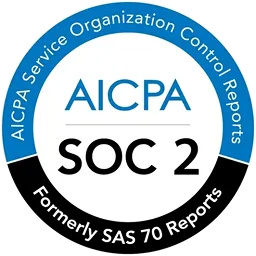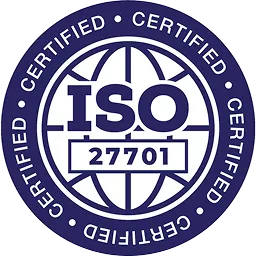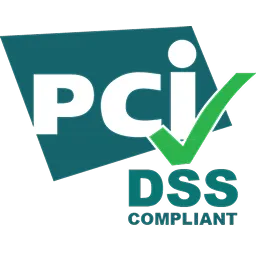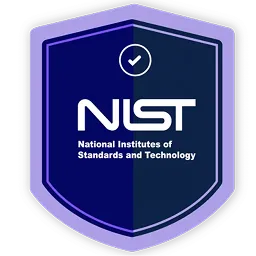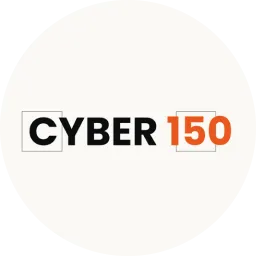Ensuring successful IAM implementation involves adopting best practices to maximize security benefits. In this article, we'll explore the 9 identity and access management best practices.
As organizations increasingly integrate cloud services into their operations, they encounter unique identity and access management challenges. One prime challenge is the exponential growth of diverse identities linked to these services. This surge in identities, ranging from employees and contractors to applications and devices, complicates the management and security of access.
So, this is precisely where identity and access management best practices come into play. What are these best practices? How does it help? Let’s find out.
But before that let’s briefly explore the IAM risks & challenges. This will help you further understand which challenges identity and access management best practices mitigate.
What is IAM?
Identity and access management (IAM) is essential for protecting an organization's security. It uses various technologies and procedures to ensure that only authorized individuals can access specific resources at the right time and for the right purpose. These resources include cloud applications, data, and systems. According to Gartner, IAM is a key practice that helps prevent unauthorized access and reduce fraud risks.
Moreover, IAM involves managing user identities, controlling access permissions, and safeguarding sensitive information. By implementing IAM protocols, your organization can create a strong security framework that protects your assets and improves operational efficiency.
Key Components Of IAM
IAM best practices comprise essential elements that form the foundation of a robust identity and access management framework:
- Identity Management and Authentication Distinction: Clearly distinguish between identity management and authentication processes to cultivate a comprehensive understanding of how individuals are identified within the system.
- Role Definition and Assignment: Explicitly define distinct roles within the system and assign these roles to individuals based on their responsibilities and specific access requirements, ensuring a precise alignment of roles with organizational needs.
- Role Lifecycle Management: Streamline the addition, modification, and suspension of roles for individuals within the system. This ensures a dynamic and continually updated access structure that adapts to evolving organizational requirements.
- Granular Access Control: Implement a sophisticated access control system, allowing precise granting of varied access levels to specific individuals or groups based on their designated roles and responsibilities. This enhances security by providing access tailored to individual needs.
- Data Protection: Emphasize the safeguarding of sensitive data within the system through the implementation of robust measures. This proactive approach ensures overall security, effectively mitigating the risk of unauthorized access or potential breaches and maintaining the integrity of critical information.
Identity & Access Management Risks & Challenges
Effectively managing identity and access within an organization has inherent risks and challenges. Understanding and addressing these concerns is crucial for ensuring the security and efficiency of Identity and Access Management (IAM) systems.
- Cybersecurity Threats: IAM systems can be susceptible to cybersecurity threats, including phishing attacks, malware, and other malicious activities that compromise user identities and access controls. Constant vigilance and robust cybersecurity measures are essential to detect and mitigate evolving threats, requiring organizations to stay ahead of potential risks.
- Complexity of Implementations: Implementing IAM solutions can be complex, especially in large organizations with diverse systems and user types. Organizations must carefully plan and execute IAM implementations, considering the intricacies of their environment and individual user roles and ensuring seamless integration with existing infrastructure.
- User Authentication and Authorization: Inadequate user authentication and authorization processes can lead to unauthorized access, posing a significant security risk. Implementing strong authentication methods and defining precise authorization protocols are critical for preventing unauthorized entry and ensuring data integrity.
- Compliance and Regulatory Standards: Failing to adhere to compliance and regulatory standards can result in legal consequences and reputational damage. IAM systems must align with industry-specific regulations like GDPR, HIPAA, or PCI-DSS. Regular audits and updates are necessary to ensure ongoing compliance.
- Insider Threats: Insider threats, whether intentional or accidental, can pose a serious risk to IAM systems. Organizations must implement measures to monitor user activity, detect anomalous behavior, and establish protocols for responding to potential insider threats.
Also Read: if you want to understand the challenges in detail, you can go through IAM challenges.
Navigating these risks and challenges demands a proactive and strategic approach to IAM, incorporating robust cybersecurity practices, continuous monitoring, and a commitment to staying abreast of industry best practices and regulatory requirements.
So, let’s proceed further and discuss the best identity and access management best practices to overcome these challenges.
11 Best Practises for Identity and Access Management
Below is the list of 11 IAM best practices your team can implement to manage, control, and effectively govern your access environment.
1. Adopt a Zero-Touch Security Strategy
As part of IAM, the Zero-Touch Security Strategy promotes continuous verification of users' digital identities. This ensures that, regardless of initial access, users' identities are consistently and rigorously authenticated before granting access to resources. The strategy mitigates the risk of unauthorized access through trusted credentials by requiring continuous identity verification. IAM best practices emphasize the importance of mitigating such risks to maintain the integrity of access controls.
Incorporating a zero-touch security strategy is crucial for organizations leveraging SaaS applications with inherent trust features. These applications often grant continuous access without re-verifying user identity, posing a potential security risk in case of unauthorized access using trusted credentials.
IT teams can embrace advanced access management platforms to address this concern. Moreover, these solutions empower you to enforce the least-privilege access (PoLP) principle, a zero-touch security strategy element.
2. Enforce A Strong Password Policy
An integral facet of optimal IAM best practices involves the implementation of a robust password policy. The utilization of strong passwords is paramount in fortifying security measures. Striking a balance between user memorability and resilience against unauthorized access, strong passwords significantly diminish the risk of security breaches stemming from password guessing.
To reinforce this practice, your team can institute a comprehensive password policy, ensuring employees create resilient passwords instead of generic ones. These passwords should encompass combinations of numbers, alphabets, and special symbols, enhancing their complexity and efficacy. Moreover, it is crucial to advocate for the regular rotation of passwords among employees, fostering a secure access environment and aligning with established best practices in identity and access management.
3. Use Multifactor Authentication Methods To Add An Extra Layer Of Protection
In identity and access management (IAM), relying solely on login credentials falls short of optimal security standards. An imperative IAM best practice involves the incorporation of multi-factor authentication (MFA) methods to introduce an additional layer of robust security.
MFA transcends the limitations of single-factor authentication by necessitating two or more validation methods for authenticating a user's identity. This approach streamlines the authentication process and enhances security through diverse verification methods, including:
- Biometric Authentication: Utilizing features such as fingerprints or facial recognition to uniquely identify and authenticate users.
- Possession Authentication: Employing methods like sending a one-time password (OTP) to a user's personal device, such as a phone or laptop, ensuring possession-based verification.
- Knowledge Authentication: Verifying identity through knowledge-based methods, such as answering security questions and adding an additional layer of cognitive validation.
- User Location or Time-Based Data Verification: Validating identity through location or time-based data, offering contextual insights into the user's access request.
Organizations fortify their IAM framework by adopting multi - factor authentication, elevating security measures beyond traditional password-based systems. This comprehensive approach to authentication aligns with best practices, ensuring a more resilient defense against unauthorized access attempts.
4. Implement Just-In-Time Access for Adaptive Privilege Management
In pursuit of optimal IAM best practices, there arises a need for a nuanced approach that goes beyond the principle of least privilege, especially in situations requiring heightened flexibility. For instance, scenarios where a help desk associate requires temporary privilege escalation to address urgent customer issues may demand a solution that aligns with IAM best practices.
Enter the concept of just-in-time access—a strategic application of temporary, time-limited access permissions. This approach temporarily elevates privileges without compromising security by providing excessive access. These precisely defined broad permissions are typically facilitated through disposable, one-time-use, or temporary credentials, ensuring the access remains transient and aligns seamlessly with overarching user access provisioning policies.
Particularly beneficial for external users like vendors or partners requiring periodic access, just-in-time access optimizes IAM by balancing the need for temporary privileges and the imperative of maintaining security.
5. Implement Role-Based Access Control and Attribute-Based Access Control Policies
Combining Role-Based Access Control (RBAC) and Attribute-Based Access Control (ABAC) offers a powerful approach to user access management, streamlining best practices.
RBAC simplifies access management by assigning minimum permissions based on user roles. For instance, roles like “third-party vendor,” “administrator,” or “manager” determine the access level for all users within those roles. This ensures that employees receive only the permissions necessary for their job functions. However, RBAC alone may necessitate additional manual effort to grant access to tools outside of core functions, particularly as the technology landscape of a company evolves.
ABAC, on the other hand, defines access through policies based on user attributes and conditions. For example, employees in the marketing department might need access to specific tools that aren’t required by other departments. While ABAC provides fine-grained control, it can become cumbersome with a large number of attributes and complex policy requirements.
Integrating RBAC and ABAC allows for more efficient automation of access provisioning and deprovisioning as users join, leave, or change roles within the organization. This combination enhances the effectiveness of access management strategies, making it an integral part of a robust IAM system.
Also Read: Confused between both the terms? You can go through RBAC vs ABAC to know them in detail.
6. Automate Workflows To Avoid Access Mismanagement
Manually managing repetitive IT tasks, such as provisioning, access modification, and deprovisioning, can be error-prone, inefficient, and potentially affect employee experience and productivity. Additionally, relying on manual user access management processes can introduce security risks, exposing sensitive organizational data to vulnerabilities.
To further elaborate on this IAM best practice, consider the following key points:
- Efficiency and Productivity Gains: Automation streamlines the provisioning and deprovisioning processes, reducing the time and effort required for everyday tasks. This efficiency not only enhances overall productivity but also ensures that employees have timely access to the resources they need.
- Minimized Human Errors: Automated workflows significantly reduce the likelihood of human errors associated with manual processes. By eliminating manual intervention, the risk of misconfigurations or oversight in access management is mitigated, contributing to a more secure IAM environment.
- Consistency in Access Management: Automation enforces consistency in access management across the organization. Standardized processes ensure that access rights are applied uniformly, reducing the likelihood of discrepancies and ensuring compliance with security policies.
- Immediate Responses to Changes: Automated workflows enable real-time responses to changes in user roles or access requirements. Whether it's onboarding a new employee, modifying access for an existing user, or deprovisioning access upon employee departure, automation ensures swift and accurate execution of these tasks.
- Enhanced Security Posture: By minimizing manual intervention, automated workflows reduce the surface area for potential security vulnerabilities. Access modifications are carried out consistently, and the risk of unauthorized access is diminished, contributing to a more robust security posture.
Incorporating automated workflows into IAM practices not only addresses the challenges of manual access management but also contributes significantly to maintaining a secure, efficient, and scalable access control environment within the organization.
7. Conduct Regular Audits To Stay Complaint & Secure
Access permissions sometimes remain unchanged even when they are no longer needed. This stagnant access creates a potential security risk, as unauthorized individuals might exploit these permissions to gain access to sensitive data and potentially cause a breach.
To mitigate this risk, it's essential to conduct regular access review audits. These audits involve reviewing existing access permissions to determine their continued necessity. If a user requires additional access or requests the modification of access, prompt action can be taken to address these requests.
Further, access audits play a crucial role in ensuring compliance with industry regulations and internal policies. Regularly reviewing and updating access permissions helps organizations align with changing compliance requirements, reducing the risk of penalties and legal consequences.
8. Audit Orphaned Accounts Regularly
One of the most overlooked yet critical practices is the regular auditing of orphaned accounts. Orphaned accounts are user accounts that remain active even after an employee has left the organization or changed roles. These accounts pose significant security risks, as they can be exploited by malicious actors to gain unauthorized access to sensitive systems and data.
Regular auditing of orphaned accounts helps you mitigate these risks by identifying and addressing any accounts that should no longer have access to the network. By conducting these audits frequently, your team can ensure that only authorized users have access to the organization's resources, reducing the chances of a security breach.
Moreover, keeping track of orphaned accounts is essential for maintaining compliance with industry regulations and internal security policies. Neglecting to audit these accounts can lead to non-compliance, resulting in fines and damage to the organization’s reputation. Regular audits also contribute to better resource management, as your team can reassign or remove unnecessary accounts, improving system efficiency.
9. Centralize Log Collection to Meet Compliance
Centralizing log collection is a crucial best practice in IAM that you should consider. Logs are records of every action taken within your IT systems, from user logins to changes in fine-grained permissions. When these logs are spread across various systems and applications, it becomes challenging to monitor and analyze them effectively.
By centralizing log collection, you can ensure that all activity logs are gathered in one place. This makes it easier to monitor user behavior and detect any suspicious activity. Further, this centralization allows for quicker identification of potential security threats, such as unauthorized access activity/attempts or unusual login patterns, enabling faster response times to mitigate risks.
In addition, centralized log collection simplifies compliance with industry regulations. Many compliance standards require your organization to maintain detailed records of user activity and to be able to produce these logs quickly during audits.
10. Opt For Passwordless Authentication Methods
Passwordless authentication or logins, as the name suggests, authenticates users without requiring them to enter a password. This approach offers several advantages, including enhanced user experience by eliminating the need to remember credentials, time and productivity savings, stronger security against threats like phishing and brute force attacks, and improved ease of access.
Passwordless login can be achieved through various methods, some of which are commonly used:
- Email-based login: Users can log in by receiving a unique code from their registered email address.
- SMS-based login: Users can log in by receiving a unique code from their linked phone number.
- Biometrics-based login: Users can log in using biometric technologies such as fingerprint, facial recognition, or iris scans.
- Social login: Users can log in through their existing social media accounts like Facebook, Twitter, or Google.
11. Adopt A Modern Access Management Solution
Today’s cybersecurity strategies need modern access management tools to handle complex access control and administrative tasks. These tools provide a centralized way to manage user permissions, making it easier for organizations to adapt to changing business needs and technology.
Modern access management tools come with smart access policies that adjust security based on factors like user location, device, and behavior. This means security measures are tailored to the risk, offering better protection against unauthorized access.
However, multiple options available might make the process of choosing the suitable tool overwhelming. Fortunately, there is an all-in-one solution like Zluri. Zluri offers a centralized access management platform that makes controlling user access easy. With its user-friendly dashboard, your team can quickly assign, modify, or remove access to applications and resources. This centralized system gives you complete control over who can access critical systems and sensitive data.
In fact, Zluri has been named in the Gartner® Report: Reduce Your IAM Attack Surface Using Visibility, Observability, and Remediation. Download now!
Gartner, Reduce Your IAM Attack Surface Using Visibility, Observability, and Remediation, Rebecca Archambault, 8 October 2025
Gartner is a trademark of Gartner, Inc. and/or its affiliates.
Gartner does not endorse any company, vendor, product or service depicted in its publications, and does not advise technology users to select only those vendors with the highest ratings or other designation. Gartner publications consist of the opinions of Gartner’s business and technology insights organization and should not be construed as statements of fact. Gartner disclaims all warranties, expressed or implied, with respect to this publication, including any warranties of merchantability or fitness for a particular purpose.
Let's see how Zluri helps you with access management.
Zero-Touch Provisioning
Zluri simplifies and automates the onboarding process by providing zero-touch provisioning. This means that new users can seamlessly gain access to the necessary applications and resources without requiring manual intervention from your team.
In the image below, you can see how you can preset your onboarding workflows for new employees to pace up the whole process.

It ensures a smooth and secure integration of new users into the system, reducing the chances of errors or delays during the onboarding process. Also, it is heighted in Kuppingercole's research and analysis report that Zluri’s zero touch provisioning features enhance user experience by providing quick access to essential tools and resources.
Secure User Offboarding
Zluri facilitates secure user offboarding, even during user departures. The platform automates the process of revoking access and de-provisioning accounts, minimizing the risk of unauthorized access and potential security breaches when employees leave the organization.

It ensures that departing employees no longer have access to company systems and data, maintaining data security and compliance. This feature also saves time and effort for IT teams by automating offboarding procedures.
Automated Access Requests
Zluri simplifies access request management by automating the process. Users can easily request access to applications or resources through Slack, and the automated workflow ensures efficient processing, reducing delays and improving user productivity.
The below mentioned image shows Zluri’s capability to raise access requests via Slack.

It streamlines access request procedures, allowing users to quickly obtain the permissions they need for their work. This feature also enhances transparency and accountability in access management.
Manage Access Beyond SCIM
The tool offers comprehensive access management capabilities beyond SCIM (System for Cross-domain Identity Management). The platform extends control and visibility to non-SCIM applications, providing a holistic approach to user access across the organization.

It allows your organization to manage access to a wide range of applications and resources, including those that do not support SCIM protocols. This feature ensures consistent access control policies and reduces the risk of unauthorized access to critical systems.
Sensitive Data Access to Contractors/External Parties
Zluri addresses the challenge of managing contractor access to sensitive data. The platform automates contractor management use cases, ensuring that access rights are time-bound and automated, especially when contractors leave the organization.
It helps organizations maintain control over sensitive data access by contractors, reducing the risk of data breaches or unauthorized access. This feature enhances security and compliance measures related to contractor access management.
Implement Best Practices to Strengthen Your IAM
Implementing IAM best practices is essential for maintaining a secure and efficient IT environment. By regularly auditing orphaned accounts, centralizing log collection, and enforcing strict access controls, you can significantly reduce the risk of unauthorized access and data breaches. These practices not only enhance security but also ensure compliance with industry regulations, protecting your organization from potential fines and reputational damage.
To streamline and strengthen your IAM strategy, consider using Zluri's access management solution. Zluri offers powerful tools for managing user access, monitoring activity logs, and identifying orphaned accounts. With Zluri, you can easily enforce IAM best practices, ensuring that their organization's systems remain secure, compliant, and efficient.
Want to try Zluri? Book a personalized demo today!
Frequently Asked Questions (FAQs)
What are the principles of IAM?
The 6 major principles of Identity and Access Management (IAM) include least privilege, RBAC, zero-trust, single sign-on, multi-factor authentication, and password policies.
Which of the following is an AWS identity and access management best practice?
To adhere to IAM security best practices in AWS, follow these guidelines:
- Limit each IAM user to a maximum of one active access key pair.
- Allow only one active SSH public key per IAM user.
- Verify that every IAM group has at least one associated user.
- Remove any unused IAM users from your AWS account.
How many pillars are in IAM?
IAM typically consists of several key pillars that form the foundation of its framework. The specific number of pillars may vary, but common ones include Identity Management, Access Management, Authentication and Authorization, and Governance. These pillars collectively contribute to the effective management of identities and access within an organization.
Why are IAM best practices essential for organizations?
IAM best practices are crucial for organizations to establish a robust framework for managing identities and controlling access. They contribute to enhanced security, regulatory compliance, operational efficiency, and effective risk mitigation, ensuring organizations can navigate the complexities of identity and access management with confidence.









.svg)



